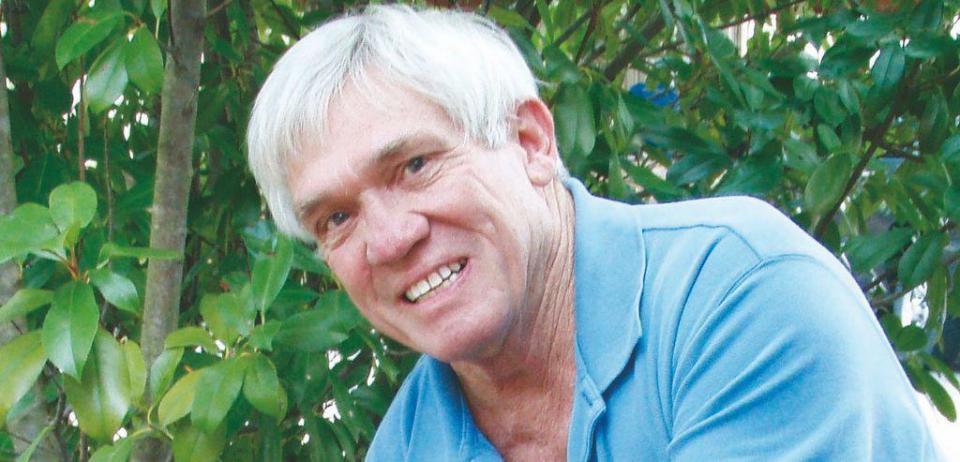What can happen in a cypress swamp? | ECOVIEWS
![Cypress knees form a line between two large trees at the Black River Cypress Preserve in South Carolina. The ecological function of cypress knees remains a mystery. [Photo courtesy Whit Gibbons]](https://s.yimg.com/ny/api/res/1.2/VOR_XDdv59GEbxOWvwZPLg--/YXBwaWQ9aGlnaGxhbmRlcjt3PTEyNDI7aD0xNjU2/https://media.zenfs.com/en/the-tuscaloosa-news/c73a7c48aa04fc89fd0a5dafa0575e81)
Last month I awoke beside one of the most majestic natural ecosystems in the Southeast, a cypress swamp. The scene was breathtaking — mirror-like water, towering trees and their associated cypress knees.
I mused about why cypress tree roots develop woody structures that poke up through swamp mud around them, a question unresolved by botanists. My thoughts wandered to experiences I’ve had in cypress swamps, eventually recalling my most memorable one.
Charles Seabrook had retired after more than 20 years as the Atlanta Journal-Constitution's environmental writer. For an office retirement party, I was asked to write about an incident involving Charlie and a cypress tree. The request came because of a photo on his office wall in which he is smiling and holding a large log. I complied.
After Seabrook retired, I recommend he continue to wear his hat when traveling through swamps. My recommendation comes from an experience during his visit to the University of Georgia's Savannah River Ecology Laboratory. He was interested in our ecological research programs, so we took a boat into a cypress swamp.
More from ECOVIEWS: Where have all the butterflies gone?
While operating the boat, I found that rather than steering in a conventional manner, navigating through the flooded swamp could be accomplished by powering the boat down to its slowest speed and letting the V-shaped bow bounce off tree trunks. When a tree hit the left side, the boat would go to the right and vice versa. That way I could talk to Charlie, point out basking turtles and snakes and explain our research projects.
This never-to-be-patented navigation technique was working in fine fashion, until the point of the boat's bow hit a dead cypress tree head-on, absolute dead center. Everyone bounced forward a bit, but we all recovered.
Then, like most people would do upon hitting a big tree while in a boat, everyone looked up to see if a limb was falling. That is, everyone looked up but Charlie. He kept looking down, writing something on his little notepad. Meanwhile, the rest of us watched, not a small falling limb, but the broken-off top of the cypress tree, which was about 50 feet high. The 8-inch-diameter, 5-foot-long section of log fell completely upright. We all prepared to dodge out of the way if necessary. That is, everyone but Charlie, who kept making notes.
The log landed straight up and down on Charlie's head. Not so good for Charlie, I thought, but if not for his head, the log might have gone through the bottom of the boat. Not good for any of us. We watched in horror as wood splattered in all directions, Charlie's glasses skidded to the front of the boat and Charlie himself fell to the deck, his baseball hat still on his head.
More from Whit Gibbons: Nature boasts its own red, white and blue combinations
Jane Sanders, our public relations person, who had arranged for the AJC reporter to visit, wondered if her career as a journalist was vanishing before her eyes,. The students wondered if this reporter lying on the boat's deck would accurately remember what they had told him about their research. And I wondered if Charlie was still alive.
We all watched speechlessly as he got to his feet, brushed off leaves and bark, took his glasses from one student and his little notebook from another, and continued taking notes.
I finally broke the awkward silence. "It's a good thing you were wearing that hat," the one now smashed flat on the top of his head.
Charlie was a remarkably good sport about the whole incident. He had his picture taken while holding the log and took it back to Atlanta. Those of us there that day will always remember him for his good nature, plus he even wrote a nice story about our research. But something tells me that if the log had been a little bigger, someone would have been writing an obituary instead. They probably would not have selected me.

Whit Gibbons is professor of zoology and senior biologist at the University of Georgia’s Savannah River Ecology Laboratory. If you have an environmental question or comment, email ecoviews@gmail.com.
This article originally appeared on The Tuscaloosa News: What can happen in a cypress swamp? | ECOVIEWS
